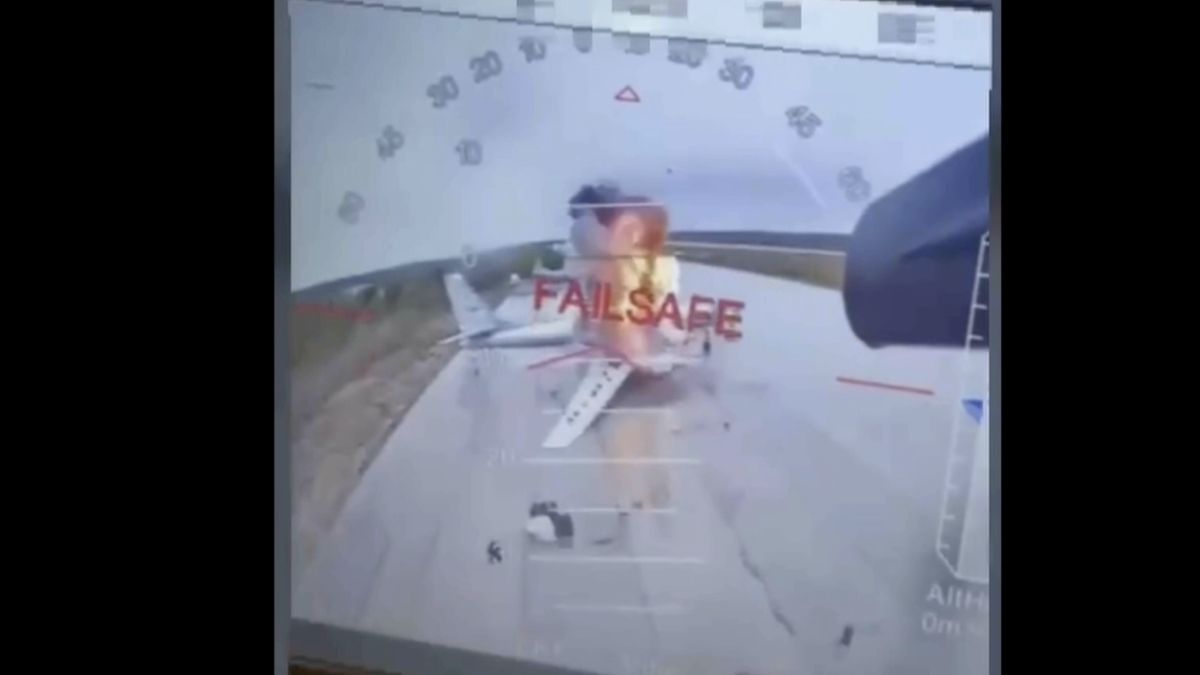The Ukraine war in a new phase.
Though Russia has used drones to hit Ukraine since the beginning of the war, Moscow has taken things to a different level.
Russia in July launched over 6,000 drone strikes across Ukraine including Kyiv, Kharkiv, Odesa, and Lviv leaving dozens dead and hundreds injured.
That’s the most in any month since the beginning of the war in 2022.
On July 9 alone Russia launched over 700 strikes against Ukraine using its Iranian-made Shahed drones.
Ukraine is now attempting to combat Russia’s attacks via interceptor drones.
President Volodymyr Zelenskyy last month urged companies in Ukraine to boost manufacturing and production of these drones.
“I met with representatives of this production and with other manufacturers. Our request is 1,000 interceptors per day,” Zelenskyy said.
But what do we know about interceptor drones? How do they work? Why are they so important to Ukraine?
Let’s take a closer look
Interceptor drones and how they work
First, let’s take a closer look at interceptor drones. While drones are Unmanned Arial Vehicles (UAVs), interceptor drones are UAVs built to find, follow and destroy other drones and airborne threats.
These drones are built to actively engage with threats. They work autonomously or semi-autonomously. They come with features such as advanced sensing, autonomous navigation capabilities in order to maneuver at high speeds, recognising targets automatically and precision hovering.
They are also equipped with net launchers, electronic jammers, and kamikaze-style impactors. They use advanced navigation tech like AI-powered inertial navigation systems.
They work by using their radar, spotters or sensors to spot incoming threats. Some are synced up with a country’s air defence network.
This allows them to respond to threats in real time – at a fraction of the cost of missile systems or ground-based radar systems.
Once they intercept enemy UAVs, they can either ram into them – known as the Kamikaze method – use nets and even explosives to down the enemy’s object.
These interceptor drones are smaller than other UAVs and faster – which allows them to intercept – as well as highly manouverable.
For example, experts say the Shahed drones Russia is using can fly between 200 and 300 kilometres per hour.
They are also more effective when they are autonomous.
As Lyuba Shipovich, CEO of Dignitas, which helps train Ukrainian soldiers on interceptors, told The Interpreter, “You can’t expect to have 700 operators for 700 drones during a mass strike like the ones we’re seeing now. AI allows us to launch swarms of interceptor drones without that limitation.”
Though they are more expensive than regular drones, they do not cost nearly as much as other defensive systems.
Anti-aircraft missiles, for example, can cost as much as $1 million (Rs 8.5 crore), while surface-to-air missiles can cost between $40,000 (Rs 34.98 lakh) and $100,000 ( Rs 87.44 lakh)
A single interceptor drone can cost as little as $5,000 (Rs 4.39 lakh). Kamikaze interceptor drones are even cheaper, costing as little as $200 (Rs 20,000) to $2000 (Rs 2.20 lakh).
For Ukraine’s armed forces that’s a downright bargain.
Why are they important to Ukraine
Because interceptor drones can combat Russia’s Shahed drones, which have become a menace in Ukraine. The Russian strategy has been to overwhelm Ukraine and demoralise its defenders through sheer numbers.
In July, Russia sent 6,297 long-range drones into Ukraine. That figure is 14 times what it was in July 2024, when Russia sent around 400 drones.
From June 1 to June 20, Russia hit Ukraine with 3,681 Shahed drones and fake UAVs. This completely disrupted the rhythm of Ukraine’s defenders. A year ago, the monthly average was at around 600 UAVs per month. Experts say these are estimates and that real numbers may even be higher.
Worse, Russia is ramping up its production of Shahed drones to nearly 100 UAVs per day . They now fly two to four kilometres above the ground – putting them out of reach of ground fire.
Kyiv predicts Moscow will be looking to manufacture 30,000 long-range drones and two million FPV (first-person-view) drones this entire year.
Which is why Ukraine is betting big on interceptor drones. Indeed, Zelenskyy even said the same at the G7 in Canada in June. “In particular, we are working on interceptor drones to enhance protection against Shaheds”, Zelenskyy said.
Many Ukrainian companies are already working on this task. Wild Hornets, a non-profit group making UAVs for Ukraine, has had great success with its Sting interceptor drone against the Shahed drones.
“You can make a drone, for example, at a firm like us, fast, cheap, and en masse,” a company representative told the Kyiv Independent. “While missiles for an S-300 are unique technologies, that maybe, seems to me, a few companies in the world can make, and more than half of those are in Russia.”
Even though Ukraine has been the world’s largest importer of weapons from 2020 to 2024 and is buying millions of drones, experts say it isn’t doing enough.
They say it needs to ramp up production even further to counter Russia.
“Russia is going to bomb our entire country with Shahed drones. They have significantly increased production and will continue to do so. If we don’t act immediately, our infrastructure, our production and our defence systems will be destroyed”, military and communications expert Serhiy Beskrestnov wrote on social media.
However, it is important to note that these interceptor drones are no silver bullet.
“We’re already using them, and we are expanding their use. But they can’t replace everything. We have to understand that anti-drone air defence is a complex system,” Yuriy Ignat, a spokesman for the Ukrainian air force, told The Telegraph.
“First, they don’t have a very long range – only a few dozen kilometres. Secondly, you need to scale up the depth of territory they cover. They only work locally. And they can’t always fly, in bad weather, fog, and so on.”
Simply put, they are an important piece of Ukraine’s defence puzzle.
)